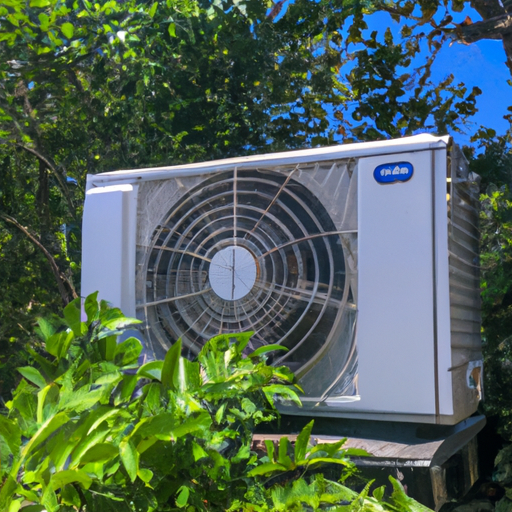Thinking about recharging your AC unit but not sure how much it will cost? Look no further! In this article, we will provide you with all the information you need to know about how much it typically costs to recharge your AC unit. Whether you are experiencing a drop in cooling efficiency or your unit is constantly running, we’ve got you covered. Read on to discover the average cost of AC unit recharges and gain peace of mind knowing what to expect when it comes to your AC maintenance bills.
Factors Affecting AC Recharge Costs
When it comes to recharging your AC unit, there are several factors that can affect the cost. It’s important to understand these factors in order to get a clear idea of what you can expect to pay. Let’s take a closer look at each of these factors and see how they can impact the price of an AC recharge.
Size of the AC Unit
The size of your AC unit is one of the primary factors that can affect the cost of a recharge. AC units come in different sizes, typically measured in British Thermal Units (BTU) or tonnage. The larger the unit, the more refrigerant it will require, resulting in a higher cost for the recharge.
BTU Rating
The BTU rating of an AC unit determines its cooling capacity. Higher BTU ratings are generally found in larger AC units that have a greater cooling capacity. These units require more refrigerant to recharge, which can drive up the cost of the service.
Tonnage
Tonnage is another measure used to determine the size of an AC unit. It refers to the amount of heat that the unit can remove from a space in a specific period of time. AC units with higher tonnage require more refrigerant, which can increase the cost of a recharge.
Refrigerant Types and Costs
The type of refrigerant used in your AC unit can also impact the cost of a recharge. There are two common types of refrigerants used in residential AC units: R-22 and R-410A. Each refrigerant has its own cost associated with it.
R-22
R-22, also known as Freon, is an older refrigerant that is being phased out due to its impact on the environment. As a result, the cost of R-22 has been increasing over the years. If your AC unit uses R-22, you can expect to pay a higher price for a recharge compared to units that use R-410A.
R-410A
R-410A is a more environmentally friendly refrigerant that has become the standard for new AC units. It is also known as Puron. Recharging an AC unit that uses R-410A typically costs less compared to units that require R-22.
Location-based Costs
Where you live can significantly impact the cost of an AC recharge. Different regions and climates have their own unique factors that can influence the price of the service.
Geographical Region
AC recharge costs can vary from one region to another due to factors such as supply and demand, local competition, and cost of living. For example, recharging an AC unit in a major city may be more expensive compared to a smaller town or rural area.
Local Climate
Climate plays a role in the cost of an AC recharge as well. In hotter climates, where AC units are used more frequently, the demand for recharging services is higher. This increased demand can lead to higher prices in areas with hotter climates.
Accessibility
The accessibility of your AC unit can also impact the cost. If your unit is located in a hard-to-reach area, such as an attic or a tight crawl space, it may require additional labor or equipment to perform the recharge. This added complexity can result in higher service charges.
Service Provider Fees
The fees charged by service providers can vary widely and greatly impact the cost of an AC recharge. It’s important to consider these fees when budgeting for the service.
Hourly Service Rates
Service providers often charge an hourly rate for their services. The hourly rate can vary depending on factors such as the company’s overhead costs, level of expertise, and reputation. Higher hourly rates will increase the overall cost of the AC recharge.
Call-out Charges
Some service providers may charge a call-out fee, which covers the cost of them coming to your location. This fee can vary depending on the distance they have to travel and the time it takes for them to reach your property.
Additional Fees
Service providers may also charge additional fees for services such as diagnostic tests, leak detection, or repairs. These fees can add up quickly and significantly increase the cost of an AC recharge. It’s important to ask about any additional fees before hiring a service provider.
Time of the Year
The time of the year can also impact the cost of an AC recharge. Demand for recharging services tends to fluctuate throughout the year, affecting pricing.
Peak Season Pricing
During the peak summer months when AC units are heavily used, service providers may charge higher prices for AC recharges. This increased demand can lead to a surge in pricing compared to off-peak seasons.
Off-Season Discounts
On the other hand, during the off-peak seasons when the demand for AC recharges is lower, service providers may offer discounts or special promotions to attract customers. Taking advantage of these discounts can help reduce the cost of an AC recharge.
Factors to Consider Before Recharging
Before going ahead with an AC recharge, there are a few factors you should consider to ensure the service is necessary and cost-effective.
Determining the Need for Recharge
It’s important to determine whether your AC unit actually needs a recharge before scheduling the service. Low refrigerant levels are not always the root cause of cooling issues, and other problems such as a faulty compressor or a clogged air filter can mimic the symptoms of low refrigerant.
AC Leak Detection
If your AC unit frequently requires recharging, it’s essential to have a professional perform leak detection tests. AC leaks can lead to refrigerant loss and can be an ongoing issue if not properly addressed. Fixing the source of the leak may be more cost-effective in the long run compared to repeatedly recharging the unit.
Repair vs. Recharge Decision
If your AC unit is not cooling properly or is experiencing other issues, it is important to consider whether a repair or a recharge is the best course of action. A professional HVAC technician can assess the condition of your unit and provide recommendations based on the cost-effectiveness and longevity of each option.
Determining the Need for Recharge
Signs of Low Refrigerant can indicate the need for an AC recharge. These signs may include:
- The air conditioner is blowing warm air.
- Weak air flow from the vents.
- The AC unit is cycling on and off frequently.
- Ice buildup on the evaporator coils or refrigerant lines.
- A noticeable increase in energy bills.
Diagnosing the issue requires a professional HVAC technician who can perform tests to determine the actual cause of the cooling problems. They will check the refrigerant levels and inspect the system for any leaks that may be causing the low refrigerant levels.
AC Leak Detection
AC leaks can occur over time due to various reasons, including aging components, corrosion, or improper installation. It is important to identify and repair these leaks to prevent ongoing refrigerant loss and potential damage to the AC system.
Common Leak Locations
AC systems consist of multiple components and connections where leaks can occur. Some common areas where AC leaks can be found include:
-
Evaporator coils: These coils are responsible for cooling the air and can develop leaks over time due to corrosion or manufacturing defects.
-
Condenser coils: Located in the outdoor unit, condenser coils can also develop leaks as a result of corrosion or external damage.
-
Refrigerant lines: The copper or aluminum lines that carry the refrigerant can develop leaks if they are damaged or improperly connected.
-
Schrader valves: These are valve cores located on the service ports of the AC unit. A faulty or loose valve core can cause refrigerant to leak.
Leak Detection Methods
There are several methods used to detect AC leaks, and the specific approach will depend on the size and location of the leak. Some common leak detection methods include:
-
Electronic leak detectors: These handheld devices are designed to detect refrigerant leaks by sensing the trace amounts of refrigerant in the air.
-
UV dye: A UV dye can be added to the AC system, which will leave a visible mark at the site of the leak. When an ultraviolet light is used, the dye will glow, making it easier to identify the leak.
-
Pressure testing: By pressurizing the AC system and monitoring the pressure drop, technicians can determine if there is a leak and identify its location.
Once a leak is detected, it is crucial to have the AC system repaired by a professional to prevent further refrigerant loss and potential damage to the unit.
Warranty Coverage
When considering the cost of an AC recharge, it’s important to understand any warranty coverage that may apply. There are three main types of warranties that can impact the cost of servicing your AC unit.
Manufacturer’s Warranty
AC units often come with a manufacturer’s warranty that covers specific components of the system for a certain time period. This warranty may include coverage for refrigerant-related issues. If your AC unit is still under warranty, the cost of a recharge may be significantly reduced or even covered by the manufacturer.
Extended Warranty
Some homeowners choose to purchase extended warranties for their AC units. These extended warranties can provide additional coverage beyond the manufacturer’s warranty period. If you have an extended warranty, it’s important to review the terms to determine if it covers the cost of a recharge.
Service Contracts
Service contracts are typically offered by HVAC companies and provide ongoing maintenance and repair services for your AC unit. These contracts often include regular inspections and preventative maintenance, which can help identify and prevent the need for a recharge. If you have a service contract in place, it’s important to review its terms to see if it covers the cost of a recharge.
In conclusion, several factors can influence the cost of an AC recharge. Factors such as the size of the AC unit, the type of refrigerant used, the location, the service provider fees, and the time of the year can all impact the overall cost. Before proceeding with a recharge, it’s important to assess the need for the service, consider leak detection, and evaluate the cost-effectiveness of repairs versus recharging. By understanding these factors and making informed decisions, you can better manage the cost of recharging your AC unit.





